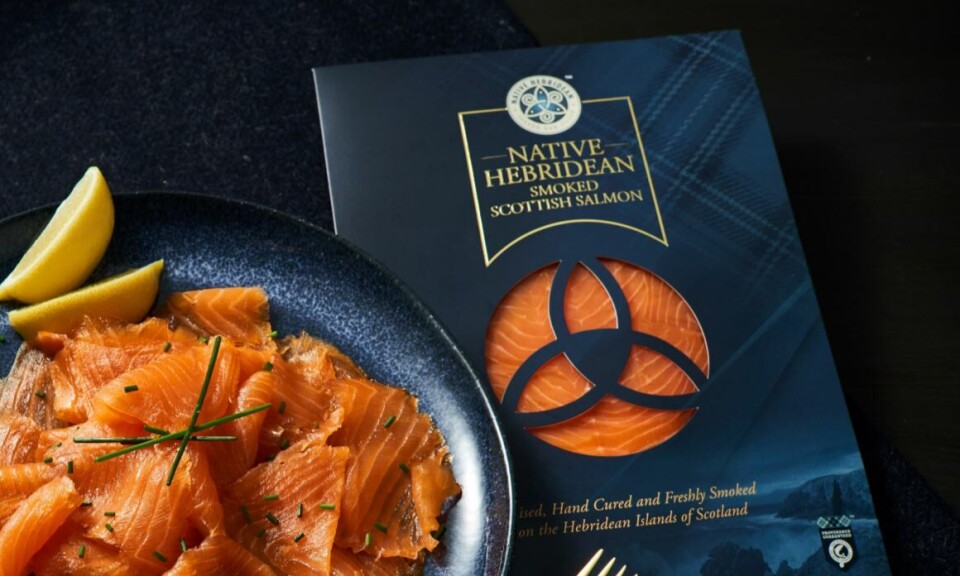
Bakkafrost and SSC ride out Covid upheaval
Faroese salmon farmer Bakkafrost and its Scottish subsidiary, the Scottish Salmon Company (SSC), have continued to make a profit during Covid-19, but results for the first half of the year have been reduced due to the pandemic.
“H1 2020 has been severely affected by the Covid-19 pandemic. Together with increased transportation costs and currency movements, this has had a negative impact on our financial results,” said Bakkafrost chief executive Regin Jacobsen in the company’s second-quarter report today.
“We are, however, pleased to have positive results in all segments: VAP (value-added products), FOF (fishmeal, oil and feed) and the farming segments in the Faroe Islands and Scotland.
“We are also grateful that we have been able to keep our employees safe during the pandemic and of having been able to maintain the supply of healthy and safe salmon products to our customers.”

£57.2m profit in Q2
Bakkafrost Group made a profit of DKK 471.7 million (£57.2m) for the second quarter of 2020, up from DKK 188.6m in the same period last year. For H1 2020, the profit was DKK 323.7m, down from DKK 401.4m in H1 2019.
The Faroes farming segment made an operational EBIT of DKK 85.8m in the quarter, down from DKK 303.4m in Q2 2019, on a harvest of 12,941 tonnes gutted weight (Q2, 2019: 12,609 tgw). This works out at an operational EBIT per kilo of DKK 6.63 (£0.80) and an operational EBIT margin of 14.9%.
The Scotland farming segment (SSC) made an operational EBIT of DKK 28.8m on a harvest of 7,937 tgw. This works out at an operational EBIT per kilo of DKK 3.63 (£0.44) and an operational EBIT margin of 7.6%.
Total harvested volumes in H1 2020 were 38,813 tgw (26,316 tgw), of which 23,608 tgw were harvested in the Faroe Islands (26,316 tgw) and 15,205 tgw were harvested in Scotland. There are no comparison figures for H1 and Q2 2019 for SSC as the company was not owned by Bakkafrost at the time.
In total, 5.8 million (3.6 million) smolts were transferred during Q2 2020: 2.9 million (3.6 million) in the Faroe Islands and 2.8 million in Scotland. In H1 2020, 9.1 million (5.3 million) smolts were transferred: 5.2 million (5.3 million) in the Faroe Islands and 3.9 million in Scotland.

Bigger smolts
According to Bakkafrost’s report, the size of transferred smolt is increasing and will gradually impact the farming output over the next couple of years.
“The operation in Scotland is gradually improving its key performing indicators and is expected to improve further over the coming years as further investments in the operation will add benefits,” said the company.
The company’s Strond hatchery in the Faroes is now in full operation and gradually increasing the average smolt size to reach 500g as part of Bakkfrost’s large-smolt strategy.
“This strategy will also be extended to the Scottish farming operation where the plan is to invest in two or three large hatcheries in the coming years in order to become self-sufficient with large smolts,” wrote Bakkafrost.
Strong biological performance
“Overall, the biological performance in the Faroese and Scottish operations have been strong during Q2 2020. Bakkafrost’s expected harvest volume in 2020 in the Faroe Islands is 50,000 tonnes gutted weight, while the expected harvest in 2020 in Scotland is 39,000 tonnes gutted weight.
“Harvest volumes for 2021 in the Faroe Islands are expected to reach 62,500 tonnes gutted weight and 44,000 tonnes gutted weight in Scotland.”
Bakkafrost said the losses of fish to a severe storm that hit the Faroe Islands in late February caused severe damage and took the harvest volume down from expected 57,000 tonnes to 50,000 tonnes in 2020.























































